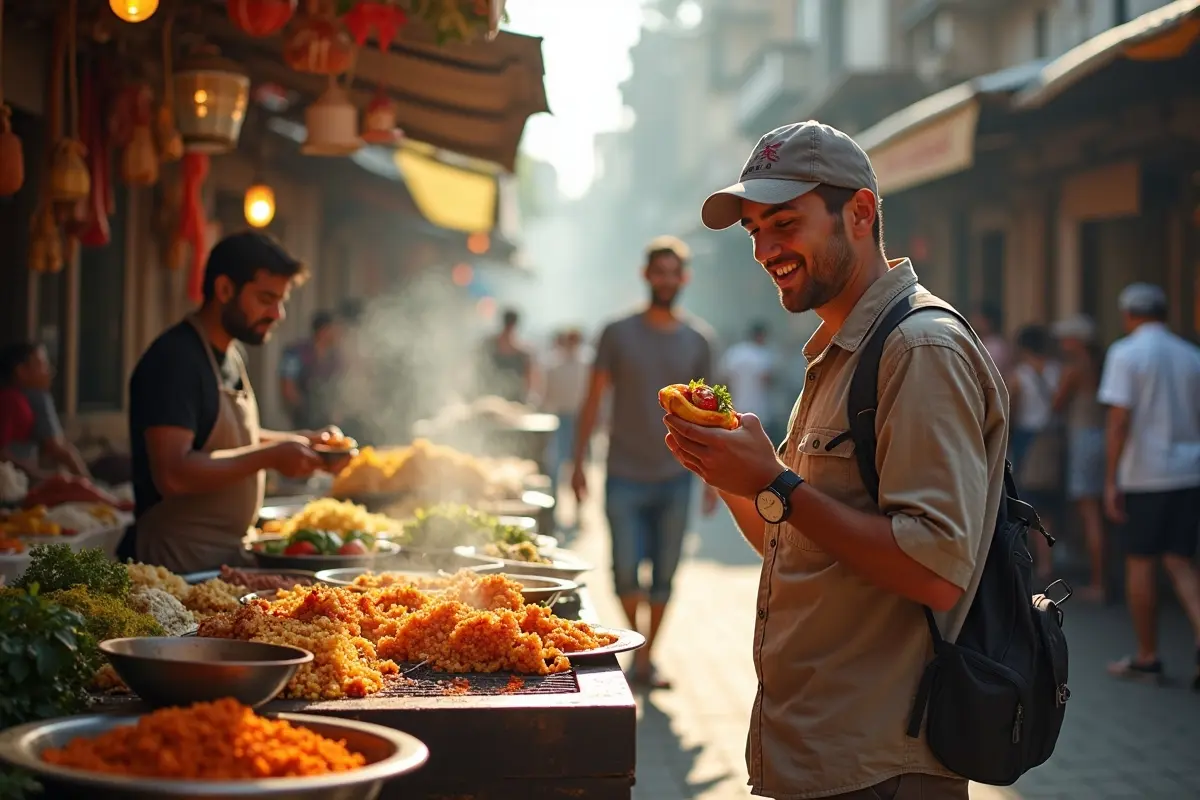Culinary Adventures: Discovering Safe and Delicious Local Food While Traveling
Exploring a new destination’s food culture is exhilarating, featuring unique street snacks, stews, and pastries. However, travelers must strike a balance between culinary adventure and health precautions. Thorough research and reliable recommendations are crucial. Knowing what to expect and understanding local eating customs helps avoid common pitfalls during gastronomic journeys.
Practical preparation should include strategies to prevent foodborne illness, focusing on hygiene and local insights. Culinary workshops and food tours enhance cultural experiences while ensuring safe and authentic food encounters.
Researching Local Cuisine and Food Safety
Begin by exploring the local cuisine to learn about its signature ingredients and traditional cooking styles. Different countries have varying dining practices and sourcing, so some foods are more prone to contamination. Utilize travel health resources, such as the CDC’s Food and Water Safety guidelines, to understand common risks associated with travel.
Knowing the local culinary scene helps identify potential allergens and raw ingredients. Experts like Claudette Spinelli emphasize the importance of researching local specialties and preparation methods, as well as staying informed about outbreaks or advisories, to ensure safe and enjoyable dining experiences abroad.
Choosing Reputable Eateries
To minimize risk, eat where locals eat. Busy restaurants or stalls with high turnover often serve fresher food and maintain higher standards of hygiene. Choose places that are popular among families and locals, as they are reliable indicators of quality.
Use reviews from TripAdvisor or Google and ask local guides or hotel staff for recommendations. Signs of a reputable eatery include clean stations, cooks with gloves or hairnets, and visible cleanliness. If in doubt, select thoroughly cooked dishes and avoid raw or undercooked items, unless they are fresh.
Understanding Common Foodborne Risks
Contaminated food or water is a primary cause of travel-related illness, especially in parts of the world with less stringent food safety regulations. Illnesses such as traveler’s diarrhea, Salmonella, or hepatitis A can be contracted through the consumption of improperly handled food. Understanding these risks helps travelers adopt preventive measures.
Proactive steps include avoiding unpasteurized dairy products, properly washing fruits and vegetables, and opting for bottled drinks over those containing ice from uncertain sources. Carrying an emergency kit with antidiarrheal medication and oral rehydration salts is also a wise choice.
Participating in Culinary Tours and Classes
Guided culinary adventures offer insight into both local flavors and practical food safety. Whether joining a professional tour or a cooking class with locals, you’ll learn how to identify quality ingredients, safe preparation techniques, and time-honored preservation methods. Trusted networks connect travelers with hosts who emphasize authentic and hygienic cooking environments.
These experiences yield more than memorable meals—they teach lifelong skills in culinary discernment and international etiquette, further reducing risk and deepening cultural appreciation.
Staying Hydrated and Mindful of Water Sources
Hydration is essential, but not all water is safe. In regions where water purity is questionable, always opt for sealed bottled water from reputable brands. Shun tap water, check that seals on bottles haven’t been tampered with, and avoid ice unless made from purified water. Also, pay close attention to the water used to wash produce or prepare beverages.
High-altitude or tropical destinations require extra vigilance, as heat and physical exertion can increase your need for clean fluids. Use purification tablets or boil water if bottled options are unavailable.
Embracing Street Food with Caution
Street markets reveal the heart of local food scenes, but selecting vendors wisely is essential. Observe hygiene habits, assess the cleanliness of utensils and serving surfaces, and favor stalls drawing steady crowds. Items grilled or fried in front of you tend to be safer than those sitting uncovered at room temperature.
Opt for popular options and skip raw foods unless you’re confident in their safety. If you’re sensitive to spice, ask about heat levels before ordering. Trust your instincts—if a place looks unsanitary, move on to the next vendor.
Communicating Dietary Restrictions Effectively
If you have allergies or dietary restrictions, learn basic phrases in the local language or carry a printed card to communicate your needs effectively. This eliminates confusion and ensures your hosts understand how to safely prepare your meal. Digital translation apps or phrasebooks can be invaluable in areas where language barriers exist.
When dining at restaurants, establish clear communication with your server and don’t hesitate to ask about cooking methods or substitute ingredients. Most reputable establishments will readily accommodate your needs if you inform them in advance.
Packing Essential Food Safety Items
A few compact items can make a significant difference in maintaining hygiene: hand sanitizer, disinfectant wipes, and a portable water filter are invaluable on the road. Reusable utensils and collapsible bowls help you enjoy market finds in a safe and controlled manner. If you’re venturing off the tourist path, consider a basic first aid kit with essential food safety items.
Preparation and vigilance transform culinary travel into a safe, memorable adventure. By tapping into both local wisdom and trusted health resources, you can discover a world of flavors while protecting your well-being.
Final Thoughts
Exploring local cuisine is one of the most rewarding aspects of travel, offering a window into culture, tradition, and community. However, food safety should always remain a priority. By researching local dishes, selecting reputable eateries, and understanding common foodborne risks, travelers can significantly reduce their chances of illness.
Participating in culinary tours, staying hydrated safely, and carrying basic hygiene supplies further enhance both safety and enjoyment. Effective communication of dietary needs ensures a smoother dining experience wherever you go. Ultimately, informed preparation enables you to savor authentic flavors with confidence, making every meal a safe and memorable part of your journey.







0